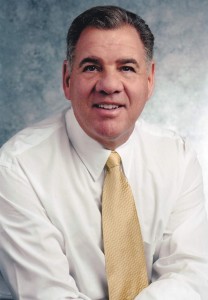AMERICAN LAWYER MEDIA
Tort Reform – Leesfield & Partners trial lawyers
September 2009
President Obama’s comments on medical malpractice in his speech to Congress on health care reform may have gotten lost in the Joe Wilson brouhaha, but they were noticed by the plaintiff and defense bar.
While the president did not use the phrase dreaded by plaintiff lawyers — tort reform — his words elicited a measure of surprise and disappointment.
“I don’t believe malpractice reform is a silver bullet, but I’ve talked to enough doctors to know that defensive medicine may be contributing to unnecessary costs,” Obama said. He directed Health and Human Services Secretary Kathleen Sebelius to authorize demonstration projects to test ideas on how to “put patient safety first and let doctors focus on practicing medicine.” About $25 million in grants for states and health care systems were authorized last week to experiment with alternatives to malpractice suits.

Obama also laid out some details on the pilot projects in a “60 Minutes” interview. Sebelius expanded on them in a memo issued Thursday. States could get grants for adopting measures such as early mediation in malpractice lawsuits, expediting claims resolution and reducing frivolous lawsuits.
In the CBS interview Sept. 11, Obama clarified his position on capping damage awards, saying: “What I would be willing to do is consider any ideas out there that would actually work in terms of reducing costs, improving the quality of patient care. So far, the evidence I’ve seen is that caps will not do that.”
That statement came as a huge relief for South Florida plaintiff lawyers, but some still fear caps, which generally have the support of doctors’ groups, could make it into a bill to gain Republican votes.
“This speech was a moment in time that was political in nature and the Obama administration’s way of holding out an olive branch to the Republicans,” said Scott Schlesinger, a partner at Sheldon J. Schlesinger P.A. in Fort Lauderdale. “But might he include something in the bill to get it passed? Sure. We’re always nervous.”
Jonathan Levy, president-elect of the Palm Beach County Justice Association and a partner at Rosenthal Levy & Simon of West Palm Beach, said, “I would be surprised to hear he would support tort reform because, as a former University of Chicago law professor, Obama would know that it would be unconstitutional to limit people’s rights to damages.”
Republicans have pushed for some form of tort limits — particularly damage caps — as part of the health care debate. Thus far, Obama and the Democrats have resisted.
Many states including Florida have passed various tort limitations. South Florida plaintiff lawyers say Obama and members of Congress should come to Florida if they want to really see how tort reform works. Many measures have been passed by the Republican-controlled Legislature including caps on medical malpractice damages and provisions blocking wrongful death cases involving unmarried couples and people with adult children.
South Florida lawyers specializing in medical malpractice say the caps have prevented many injured people from getting fair settlements and families of people killed by medical errors from even bringing claims. They say what is needed is not tort reform but medical malpractice reform that would lower the number of mistakes made by doctors and hospitals.
“We live with malpractice reform in Florida,” said Stuart Grossman, a partner with Grossman & Roth in Miami. “I see people getting gypped out of legitimate claims every day in Florida.”
“The problem with medical malpractice is there is too much of it,” Schlesinger said. “There are too many doctors hurting too many of their patients. At least 100,000 people a year are being killed by medical malpractice. They means many more are being injured.”
He and other plaintiff lawyers support a plan proposed by the Clinton administration for “enterprise liability.” Hospitals would hold the sole liability for patient errors and ensuring their doctors carry malpractice insurance.
“The best way to make sure doctors are insured is for a hospital to say, ‘You can’t practice here unless you have a million dollars in insurance,” said Gregory Barnhart, a name partner at Searcy Denney Scarola Barnhart & Shipley in West Palm Beach.
Plaintiff lawyers also take issue with statements by Sebelius that lawyers are filing frivolous medical malpractice cases. They say that is simply not the case since malpractice cases are among the most expensive to bring, often costing $100,000 to $1 million. In Florida and other states, a pre-suit investigation requires an expert to swear under oath that the standard of care was violated.
“I’ve been doing medical malpractice cases for 36 years, and I can tell that no one in their right mind is going to take a frivolous case,” said Ira Leesfield of Leesfield & Partners in Miami. “They’re too complicated. They’re expensive.”
Additionally, plaintiff lawyers dispute the notion that medical malpractice cases are clogging the courts, noting foreclosure cases and business litigation represent the largest number of lawsuits gumming up the court system.
The fact that health care premiums have not dropped in Florida despite tort changes — and in fact have increased — is further evidence that caps are not working as promised, plaintiff lawyers say.
They didn’t like Obama’s assertion that doctors are being forced to practice defensive medicine to avoid lawsuits. They say doctors are practicing defensive medicine because they get paid more to order more tests and procedures.
“I wish he hadn’t said that,” Barnhart said. “That was disingenuous. He was a law professor, so he knows that the rates of malpractice litigation have gone down.”
Even Maria Currier, a partner at Holland & Knight who heads the group’s health care reform task force, said she thinks Obama was off base with his comment about defensive medicine driving up costs.
Currier, whose firm represents national hospital chains, large physician groups, major health plans and drug companies, said: “That’s only about 10 percent of the problem. The real problem is the new business models that have become necessary to deal with the decreasing revenue paid to a lot of the providers. There is a need to generate more revenue.”
Both Currier and Barnhart, who are ostensibly on different sides of the debate, liked Obama’s idea of demonstration projects.
Barnhart, former president of the Florida Justice Association, said he would support projects that set up a standard of care checklist for doctors and hospitals to follow to hopefully reduce errors. “I’d like to see if we could we have a standard of care for treatment of a heart attack, treatment of a stroke, that would lead to fewer injuries and better results,” he said.
Currier agreed. “Most of us equate tort reform with caps. This is a very different tort reform. It’s more focused on making sure we’re looking at quality, evidence-based medicine. I think that could have a tremendous benefit for at least eliminating some of those malpractice cases we believe are based on a standard that we aren’t familiar with.”







 See More Blogs
See More Blogs
Comments